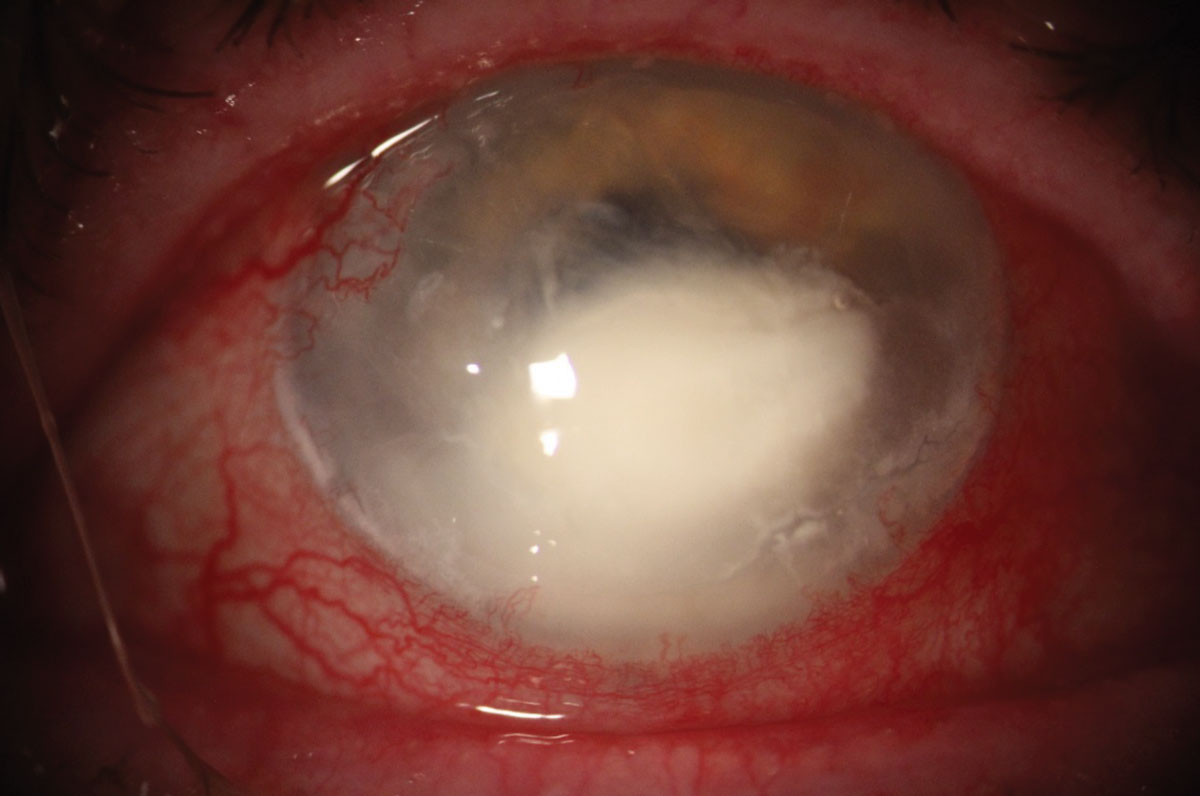 |
|
Corneal ulcer occurrence may be linked to warmer climates, as shown through social media posts and online searches. Photo: Delaney Kent, OD. Click image to enlarge. |
Internet-based applications and user-generated content reaches millions of people across the globe on a daily basis. Taking advantage of this phenomenon, the Centers for Disease Control and Prevention partnered with Google to use the platform’s search engine data to predict influenza outbreaks. Similar efforts are being made to study ophthalmological diseases. In a recent study, researchers evaluated if social media and Google search data can identify seasonal and geographic trends in the incidence of corneal ulcers in the United States.
The case series included all corneal ulcer-related data collected from two major social media platforms and Google trends between 2017 and 2021. Instagram and Twitter were searched for posts and hashtags related to “corneal ulcer.” Web and image searches of the term were documented from Google. Data was compared between seasons, defined by three-month intervals, and chi-square tests were used to determine the statistical significance.
One hundred and sixty-five individuals (79% female) and 164 individuals (79% female) posted personal new corneal ulcer diagnoses on Twitter and Instagram, respectively. Corneal ulcer-related posting on social media and search term popularity of “corneal ulcer” on Google was highest in the summer and most frequently reported in southern states.
“Although a clear seasonal relationship is difficult to determine, warmer temperatures may be linked to an increased frequency of infectious keratitis independent of the geographic location,” the authors explained.
As an example, they cited a previous study in Australia reporting that severe keratitis was more likely to occur in warmer regions of the country, with Pseudomonas aeruginosa as the most common organism implicated.
“Given that P. aeruginosa is a well-known cause of otitis externa and folliculitis as a result of swimming in contaminated water, greater ocular exposure to water in warmer climates may be another possible explanation for the increased incidence of corneal ulcers in the summer. These theories are further supported by our study showing the highest percentage of corneal ulcer-related posts and search popularity in the South, where climates tend to be warmer,” the authors wrote.
“Having a better understanding of seasonal and geographic associations may help providers to better counsel patients and encourage greater emphasis on contact lens hygiene as well as warning signs of infection during high-risk months,” the authors concluded. “Future directions include integrating other popular social media platforms, such as TikTok, while performing advanced data analytics and filtering of posts that were not available for this study. However, given the current technological and logistical limitations of this study, social media cannot definitively identify trends in the incidence of corneal ulcers in the United States without further analysis.”
Choi JH, Ong ES, Munir W. Social media evaluation of seasonal and geographic trends of corneal ulcers in the United States. Eye Contact Lens. August 13, 2022. [Epub ahead of print]. |

